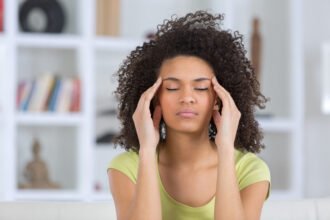If you have been a regular reader of Health Works Collective, you understand that we take mental health very seriously. One of the most devastating forms of mental illness is depression. We have talked about some of the early warning signs of depression that you cannot ignore.
However, many people don’t understand enough about the causes of depression or the steps that people need to take to address it. One of the most common forms that people deal with is seasonal affective disorder. This disorder is one of the reasons that 280 million people have depression.
Red light therapy has gained attention for its many different health benefits (Cleveland Clinic has a great article on it), but many people are still unaware of just how much it can do for you. From skin rejuvenation to mental health improvements, the applications of red light therapy are wide-ranging. In fact, its uses go far beyond what you might expect, offering unique ways to improve your well-being. So, how exactly can red light therapy help your health, and what are some ways to get more of it? Let’s break it down.
Can Red Light Therapy Help With Seasonal Affective Disorder?
For many people, the colder months bring more than just a change in temperature—they bring a shift in mood. Seasonal affective disorder (SAD) is a specific kind of depression that often happens during the fall and winter months. This is because of shorter days that have fewer hours of sunlight. One of the primary ways to treat seasonal affective disorder involves light therapy, which helps to make up for the lack of sunlight and improves mood. But did you know that red light therapy could also play a role in alleviating the symptoms of SAD?
Red light therapy uses distinct wavelengths of light to get into the skin, stimulating the production of ATP (adenosine triphosphate), which boosts cellular energy. While the therapy is more commonly known for its benefits to skin and muscle tissue, recent studies suggest that it can also have positive effects on mood regulation. In particular, the exposure to red light in the morning or evening can help regulate circadian rhythms, which are often disrupted in people with seasonal affective disorder. By helping the body maintain a regular sleep-wake cycle, red light therapy may reduce feelings of fatigue and depression associated with the disorder.
What makes red light therapy so unique is its ability to provide gentle, non-invasive light that can be used in combination with other types of light therapies for SAD. While it’s not a cure-all, the calming, mood-enhancing properties of red light may give those struggling with seasonal depression a much-needed boost during the darker months.
How Can You Use Different Types of Red Light Therapy?
When people hear red light therapy, they often think of one-size-fits-all devices, but the truth is, there are several different types of red light therapy products available, each designed to target specific health concerns. The key to getting the most out of red light therapy is to choose the right type of device that meets your needs, and understanding how they differ can help you make a better decision.
One popular option is the red light therapy belt, a portable and flexible tool that allows users to wrap the device around problem areas, such as the lower back, neck, or legs. The benefit of a red light therapy belt is that it delivers focused light directly to the muscles or joints, helping to reduce inflammation and ease discomfort. It’s particularly helpful for people dealing with muscle stiffness, chronic pain, or recovering from injuries, as the belt allows for precise, localized treatment. This makes it ideal for anyone looking to target specific areas without committing to a full-body therapy session.
Another option is panel-style devices, which can treat larger areas at once. These are especially useful for skin concerns, such as wrinkles, acne, or scars. The broad coverage of these panels helps ensure the entire area gets equal exposure to the healing red light, promoting collagen production and speeding up the skin’s natural repair process.
Can Red Light Therapy Enhance Muscle Recovery After Workouts?
If you’re an athlete or someone who regularly works out, muscle recovery is an essential part of your routine. Overworked muscles can lead to stiffness, pain, and even injury if not properly cared for. That’s where red light therapy comes into play as an effective tool to enhance muscle recovery and prevent post-workout soreness.
After a lot of exercise, your muscles need time to repair themselves, and this process often involves inflammation and minor damage to muscle fibers. Red light therapy can accelerate recovery by increasing blood flow and even delivering more oxygen and nutrients to the muscles while helping remove waste products like lactic acid. This helps reduce inflammation and supports faster healing.
Another unique benefit of red light therapy is its ability to stimulate more ATP in cells. This extra boost of energy allows muscles to repair more efficiently, speeding up recovery times. Many athletes and fitness enthusiasts find that incorporating red light therapy into their post-workout routine reduces muscle soreness and allows them to get back to their training regimen more quickly.










